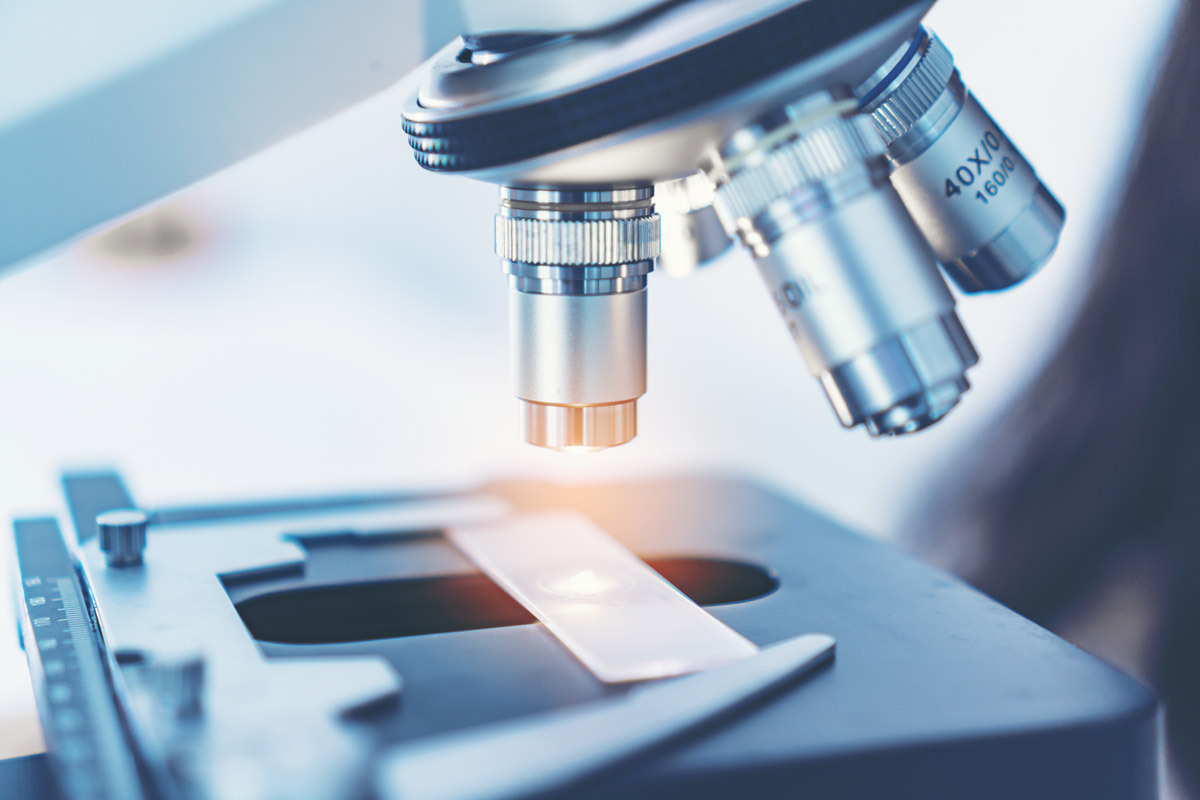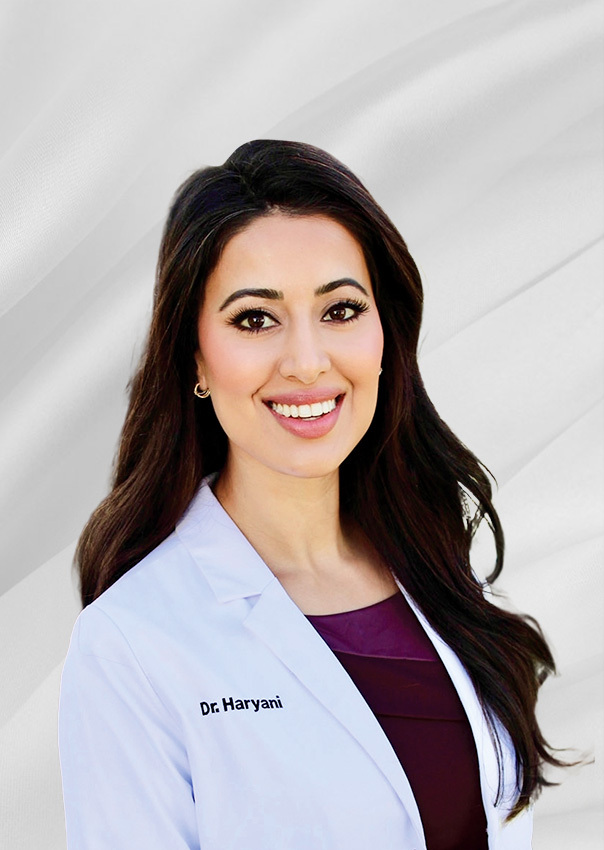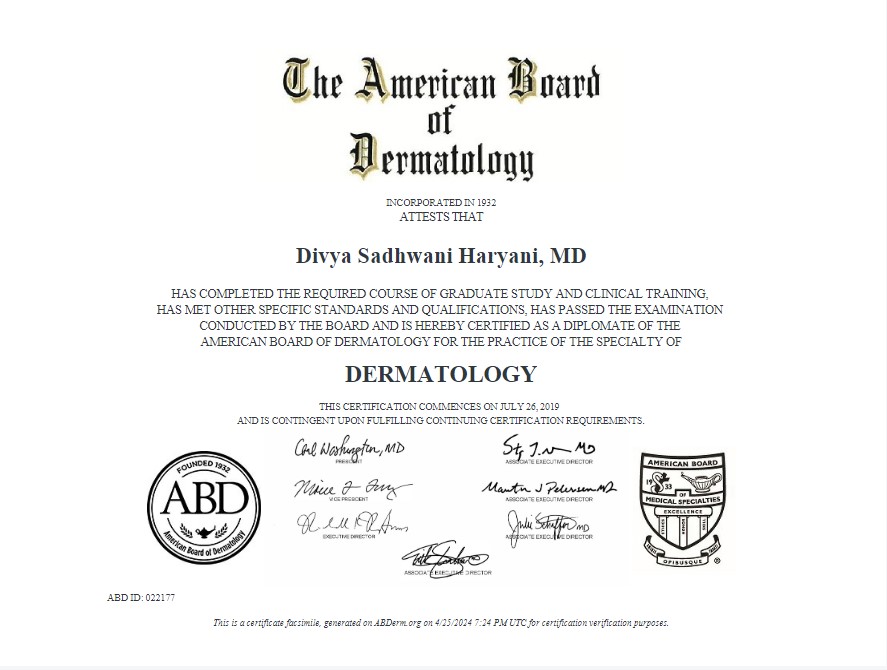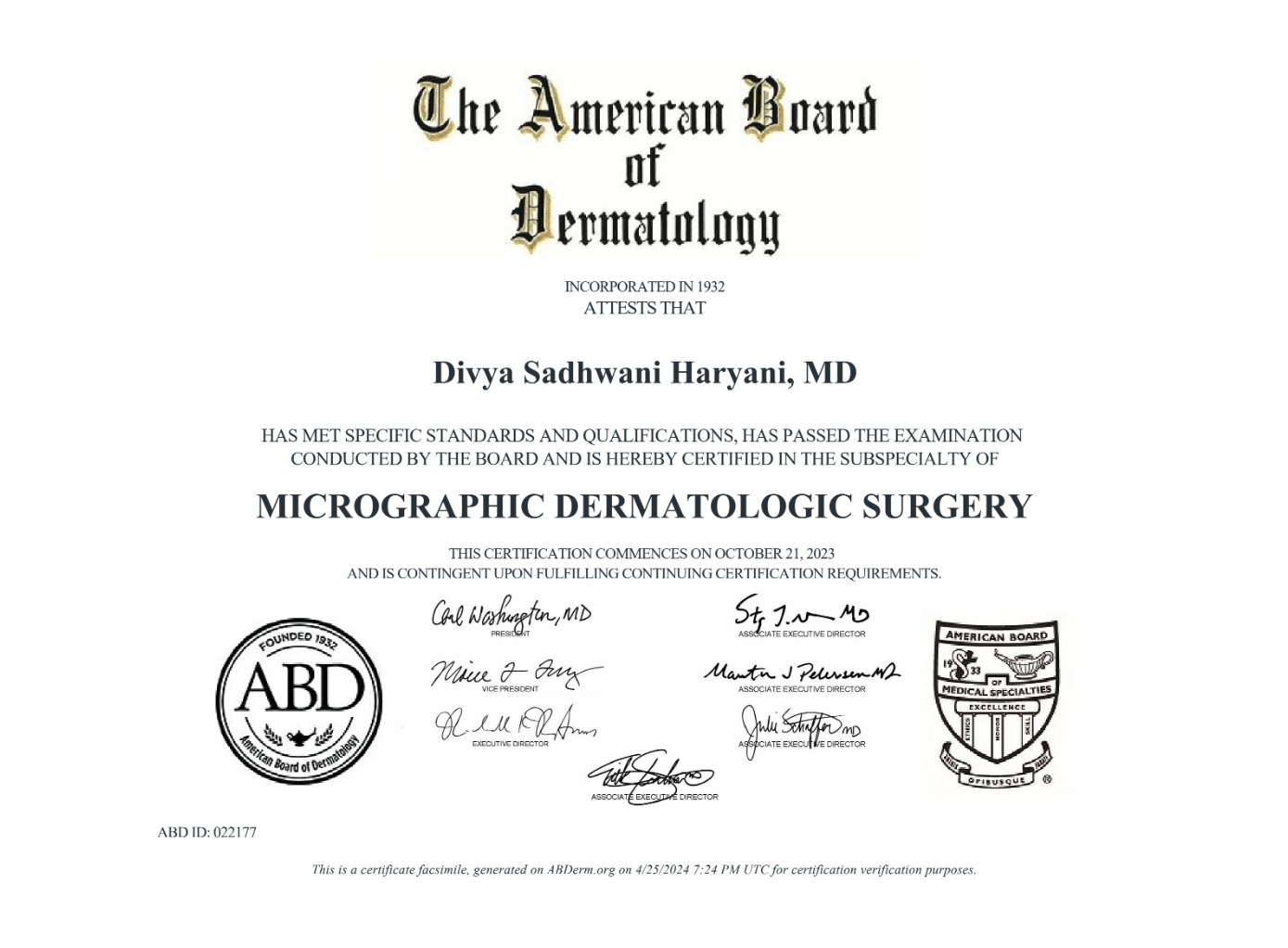
Mohs Micrographic Surgery
- Board-certified Dermatologist
- Board-certified Mohs Surgeon
- Graduated magna cum laude from Northwestern University (Evanston, IL)
- Completed dermatology training at John H. Stroger Cook County Hospital (Chicago, IL)
- Actively engaged in publishing several manuscripts and speaking on the national podium on his expertise.
Dr. Haryani has been performing skin cancer and reconstructive surgery in Florida for over five years, removing thousands of skin cancers in his own community. With extensive expertise in the Mohs micrographic surgery technique, Dr. Haryani combines precision and compassion to deliver optimal outcomes.Schedule a Consultation
- Board-certified Dermatologist
- Board certified Mohs Micrographic Surgeon and Cutaneous Oncologist
- Skin Cancer Specialist
Dr. Divya Haryani, M.D. is a leading double board-certified dermatologist and recognized key opinion leader in both cutaneous oncology and mohs micrographic surgery & reconstruction. Her background is uniquely cross-pollinated with integrated training in dermatologic surgery, facial reconstructive surgery, and cutaneous oncology at the prestigious University of South Florida in Tampa and world renowned Moffitt Cancer Center, Melanoma & Cutaneous Oncology department (widely acknowledged as one of the top cancer centers in the United States, especially for its pioneering work in melanoma research and treatment). Dr. Haryani's primary focus is recognizing and treating both the most common and complex forms of basal cell carcinoma, squamous cell carcinoma, and melanoma. Her training was both rigorous and comprehensive, encompassing a variety of therapies including superficial radiation therapy, mohs surgery and immunotherapy for non melanoma skin cancer & melanoma at the cancer center.Schedule a Consultation
- Squamous cell carcinoma (SCC)
- Basal cell carcinoma (BCC)
- Melanoma (Some types)
- Other rare types of skin cancer
- Mohs has the highest cure rate of any skin cancer procedure with a 99% cure rate for cancers that have not had previous treatment
- When you have Mohs done, your surgeon is also the pathologist who examines the removed skin tissue which ensures that all existing skin cancer is removed before you leave the office
- Mohs is a skin-sparing procedure — small sections are removed in stages to allow for the least amount of damage to healthy tissue possible
- Since only the affected tissue is removed, Mohs is ideal for cosmetically sensitive areas such as the face, ears, lips, and noes, and also for high functioning areas like the hands and feet, because it leaves behind the smallest possible scar to ensure full use and range of motion in the area
- Mohs is convenient — there is no extensive surgery prep, and the procedure is done in one day, at one location
- Your site will be numbed with a local anesthetic, likely the same that was used for your initial biopsy
- Dr. Haryani will remove a layer of skin where the cancer lies
- A temporary pressure dressing will be applied to your wound, and you will move to the waiting area
- Your specimen will be prepped by a trained Mohs technician and read through a microscope by Dr. Haryani
- If Dr. Haryani sees any cancer cells on the outer edges of the specimen, you will be brought back to the exam room again, and another layer will be removed
- Once Dr. Haryani notes that the margins are clear, you will be brought back into the exam room where your wound will be closed or covered and the nursing staff will apply the proper bandages, go over wound care, and schedule a follow-up appointment to check on your healing process








